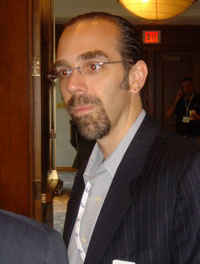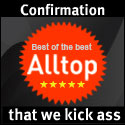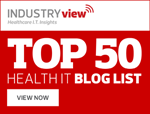Healthcare Unbound - Keynotes, Part 3

Astro Teller, CEO of Bodymedia, kicked things off after lunch with a talk about lifestyle as health care's major missing input. The principal is not to start with today's health care industry and enhance it with some technology. Market adoption of HU requires that vendors think differently - linear thinking starting with traditional health care delivery does not result in the kinds of innovations in marketing and business models required to drive HU adoption. This extends to really understanding market requirements and the whole product solution. An example is lifestyle. There is really very little known about lifestyle and its impact on health. What if we had 20 years of longitudinal data that showed that people with insomnia in their 50s had a higher incidence of falls in their 70s - data like this would be very valuable, something like sequencing the lifestyle like sequencing DNA. Teller suggested that health care is not really discreet physiological data like SpO2 or heart rate, but more about understanding humans and managing their states.
A corollary to lifestyle as health care, is driving adoption by reframing the need and potential solutions for HU solutions. This happened to Teller's company. Early on, Bodymedia decided to bypass the physician/patient market segment and targeted consumers for health and fitness. They had a distributor in Italy who very successfully sold their product to physicians as “a holter monitor for your lifestyle.” Lifestyle as a clinical input? Bodybug tracks activities like sleep, resting, when you're in a car or sitting at your desk, when you ride a bike or lift weights - all things that any physician can use in the diagnosis and treatment of patients.
Don Jones, VP of Bus Dev at Qualcomm, talked about what's missing in mobile technologies in health care. First, the current situation: in 2001 the number of mobile subscribers surpassed land lines on a global basis. Mobile phones are continuing to serve as the convergence platform for many consumer electronics categories.. Wireless data speeds and coverage continues to improve. Location based services are on the horizon, and could impact health care. Other near term futures include streaming video, financial transactions, and converged computers/cell phones. Wireless internet access is starting to eclipse wired internet access. Cell phones are already the wearable computer. In health care, phones have been used as gateways for wireless sensors and provide glucose monitoring.
Now what's missing: health care solutions must offer trust, guilt reduction, hope and fun. A solution design model includes the 7 “C”s: cost, confidentiality (the device does not give away that the user is sick), compliance (you know, where patients actually use the health care app), convenience in daily life, connectivity (to friends and family more than databases or providers), community (peer or support groups), and control (where the user's in control).
Ivo Lurvink, the GM of Philips new Consumer Healthcare Solutions group, spoke about two basic strategies that makes up Philips new health care division: cross care cycles and partnerships. Philips acquired Lifeline earlier this year, and is making a major drive into the consumer health care market. Lurvink was the first to mention the need for new distribution channels for consumer health care. Currently, DME vendors are under pressure to consolidate, mass retailers and pharmacies are getting into outpatient clinics - direct to consumer channels are being built. One thing they note as missing is what Philips calls “professional endorsers.” Philips has staked out both consumer and health care provider worlds with stand alone devices and systems that connect patients and their data to providers.
Next up Dave Whitlinger, President and Chair of Continua Health Alliance, talked about Continua's mission and potential impact on HU. After the obligatory intro slides addressing demographic and technology trends, he touched on the three use cases being targeted by HU and Continua: health and wellness, elder care, and chronic disease management. The key components for these use cases include sensors and devices on the front end, come sort of gateway, and back-end informtaion systems for use by patients, family and health care providers. Making all of this come together and more rapidly grow the market through the development of device interoperability is the goal of Continua. Tomorrow we'll get an update on the working groups at work in Continua, and their planned time lines. Someone in the audience suggested Continua extend their scope to include coordination of research so the entire group can benefit from individual research and validation efforts - and maybe gain some synergy, lowering everyone's research costs.
Craig Frazier, GM of McKesson's Extended Care Solutions Group, closed out the after-lunch session. McKesson's leveraging their hospital and payor customer base to penetrate HU solutions. McKesson last did $1.5 billion in health care IT, making them the big dog in that market. A few weeks ago, McKesson launched the Personal Health Solutions business unit. Frazier showed how all the recent acquisitions fit together with existing operations to address the home health market. The number one reason health plans or providers said they are deploying HU solutions is competitive differentiation. The second reason for HU adoption is proven return on investment for patient/physician communications, chronic disease management, and improving interoperability (both in technology solutions and in the delivery of care). Frazier's suggestions for improving HU adoption included, getting providers and payors to “work better together,” publish more studies on the benefits of HU solutions, and continue to promote interoperability standards.
Pictured right is Astro Teller, CEO of BodyMedia.



